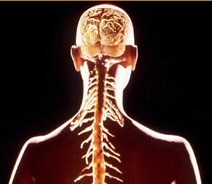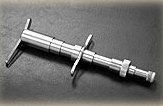|
TRT Seminar Dates: TRT Advanced Workshops: Auriculotherapy Training Dates: |
Torque Release Technique questions... |
|
|||||
FREQUENTLY ASKED QUESTIONS“I didn’t feel like much happened!”That’s OK. These techniques require that your body responds in fairly organized and coordinated ways in order for the therapeutic response to be significant. Did you ride a bike perfectly the first time you got on it? Some will respond to these techniques straight away. Others will take a few “lessons” before they “catch on”.“I pulled up a bit sore!”If you’ve always played tennis and you now go and play a game of squash, even though they seem similar, they use different muscles and stress different ligaments and tendons. Similarly with these new techniques, even though the end result is pretty much the same as any other kind of adjustment... The manner in which your body achieves this change is somewhat different. The reason some people are sore after the first time they have this adjustment is because different muscles, nerves and/or soft-tissues will have been stimulated.“Will I need the other types of physical therapy as well?”
“You don’t seem to be “doing” much to me during an adjustment?”These techniques are focused on helping your body to better look after itself: As such they actually work better when your body is given some time to respond after each part of the adjustment is delivered. In a sense we do as little as possible to get your own body to do as much as possible. “You seem to be doing a lot to my feet?”TRT uses the legs to help determine where in the spine the nervous system is being irritated. Based on patterns of contraction in one leg compared to the other, and by applying pressure to strategic points on the spinal column we can locate exactly where your spine needs to be adjusted. The pattern and degree of tension in your central nervous system is “mirrored” by patterns of muscle tension and imbalance in your hips and legs. (Similar to a Doctor measuring your blood pressure in your arm to tell what is happening in your heart.) “How can you realign my spine without doing the manual adjustment?”Because these methods work with neurological reflexes: By releasing the tension in the nervous system, the muscles around the spine will relax, releasing the restriction in the joints. “Should I go and have a massage in between adjustments to stretch the muscles?”Even though these techniques don’t seem to work directly on muscles, one of the major effects is reduction in muscle tension and shortening. We have absolutely nothing against a massage in between adjustments for relaxation, enjoyment, sports recovery, or more specific trigger point work. However, we do not recommend having a massage on the same day as, and probably even for 24-48 hours following an adjustment. This is because your body will still be processing its adjustment and probably doesn’t need any more stimulation. “Is this treatment any good for kids?”These methods are ideally suited to adjusting children, and many kids prefer this style of adjustment. Discussion with our colleagues who have introduced these techniques have revealed repeated success stories with many and varied childhood health issues, from ear infections to ADHD, colic and reflux, sleeping disorders and bedwetting. |
|
||||||
|
Main Page About TRT The Integrator Research Directory TRT Training Testimonials BLOG Products Site Map Contact Us Torque Release Technique (TRT) is the first Chiropractic Technique to be created through a rigorous scientific research and development process. TRT aims to improve health and wellbeing by improving Nervous System function via specific Adjustment of Primary Subluxations. TRT is an extremely gentle chiropractic method and has been published in major Medical and Chiropractic Journals and featured on the Discovery Health Channel. © Dr Nick Hodgson 2008 2005 Victorian Chiropractor of The Year, Australasian TRT Training Provider, Fellow Holder Research Institute. Visit Nick's other web site at www.superhealthy.com.au |
|





 Massage
is designed to stretch, relax and
stimulate blood flow in tight and
contracted muscles and other
soft-tissues. “Manual” adjustments
(cracking joints) are designed to free
stiff or stuck joints. That is the
“therapist” is doing the work to
you. The intended result of these newer
techniques is to reprogram your body to
start releasing and dissipating stored
tension. As such they are steering your
body to release, relax and realign
itself. In this sense these new
techniques replace the old methods.
Massage
is designed to stretch, relax and
stimulate blood flow in tight and
contracted muscles and other
soft-tissues. “Manual” adjustments
(cracking joints) are designed to free
stiff or stuck joints. That is the
“therapist” is doing the work to
you. The intended result of these newer
techniques is to reprogram your body to
start releasing and dissipating stored
tension. As such they are steering your
body to release, relax and realign
itself. In this sense these new
techniques replace the old methods.